

White Clover. White Clover is rich in vitamins A,B,C,E,Ca,Mg etc.
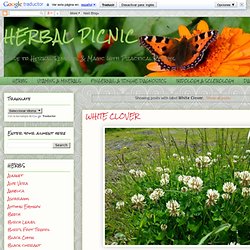
The tea is anti-inflammatory, calming, expectorant & antispasmodic. An Infusion of White Clover flowers & leaves is good for detoxification & rebuilding. It is a good remedy to purify the blood & to treat boils,wounds, ulcers, gout, abscess, menstrual conditions, leucorrhoea, rheumatoid arthritis, arthritis, scrofula & other skin diseases. A strong tea of white clover blossoms is very healing to sores when applied externally. Clover flowers can be mashed up to produce a syrupy paste, which is then applied to skin disorders such as open sores or athlete’s foot. White Clover Flower Flour. White clover, Trifloium repens, is prolific in the mid-south right now.
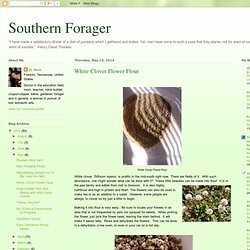
There are fields of it. Annie's Remedy Search Results. Lemon Balm Guide.pdf. Healing Herbal. Giant Puffball and Other Edible Wild Puffball Mushrooms - AmericanMushrooms.com. Mushroom Pictures & Mushroom Reference. Full Fungi. Full Fungi Forage the field for three of the best edible wild fall mushrooms.

Brilliant scarlet and gold leaves float downward, washing the forest floor in color. The annual cycle of food storage for the tree is coming to an end, only to bring a new supply of food to another group of organisms. Amid the leaves lie the decomposersorganisms breaking down plant and animal material and returning nutrients to the soil. Fungi, commonly called mushrooms and toadstools, are spore-bearing organisms that obtain energy from decomposing dead, and sometimes living, plant and animal material. Edible Flowers: Part One. Not only are flowers tasty and pretty but many have antioxidants via their color Which blossom will be your favorite edible flower?
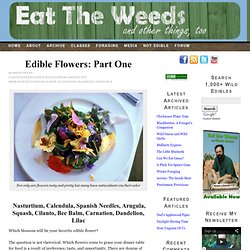
The question is not rhetorical. Which flowers come to grace your dinner table for food is a result of preference, taste, and opportunity. There are dozens of edible flowers, wild and cultivated. Beneficial and Edible Weeds. “What is a weed?
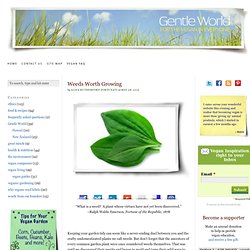
A plant whose virtues have not yet been discovered.” ~Ralph Waldo Emerson, Fortune of the Republic, 1878 Keeping your garden tidy can seem like a never-ending duel between you and the crafty undomesticated plants we call weeds. But don’t forget that the ancestors of every common garden plant were once considered weeds themselves. That was until we discovered their merits and began to mold and tame their wild ways to suit our culinary or agricultural preferences. Many plants that are still classified as weeds though have received a bad reputation due to their ability to quickly cultivate the barren earth. Let’s explore what some of these “pesky” common weeds have to offer for both your health and the health of your garden.
*Many of the nutrients in soil are lost to the elements when the ground is left bare, either by being baked out (by the sun) or washed out (by rain.) Recipes. Sink Your Teeth into Foraging. Gingered Dandelion Greens. Chickweed. Steve Johnson's Cucumber Purslane Yogurt Salad Recipe on StarChefs. Power-Packed Purslane. Common in our yards but little known in the North American kitchen, purslane is both delicious and exceptionally nutritious.
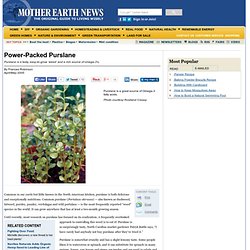
Sow Thistle, Common, Spiny, Field. Sow Thistles Turn Partially Purple When Older Sonchus: Sow Thistle, In A Pig’s Eye As I write it is in mid-January in Florida.
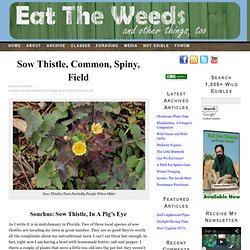
Two of three local species of sow thistles are invading my lawn in great number. They are so good they’re worth all the complaints about my untraditional lawn. I can’t eat them fast enough. You cannot eat most plants with white sap (or white berries.) Lolium temulentum. Lolium temulentum, typically known as darnel, poison darnel or cockle, is an annual plant that forms part of the Poaceae family and part of the Lolium genus.
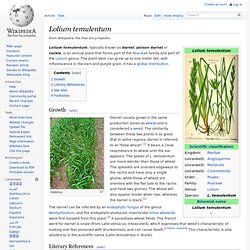
The plant stem can grow up to one meter tall, with inflorescence in the ears and purple grain. It has a global distribution. Growth[edit] Habitus Darnel usually grows in the same production zones as wheat and is considered a weed. The darnel can be infected by an endophytic fungus of the genus Neotyphodium, and the endophyte-produced, insecticidal loline alkaloids were first isolated from this plant.[3] It parasitizes wheat fields. Literary References[edit] The plant is mentioned in Horace's Satire 2.6 (eaten by the Country mouse while he serves his guest fancier foods) and may have been the plant in the Parable of the Tares in the Gospel of Matthew: See also[edit] Bromus tectorum [edit] A Modern Herbal. Botanical.com Home Page Botanical: Sonchus oleraceus (LINN.)
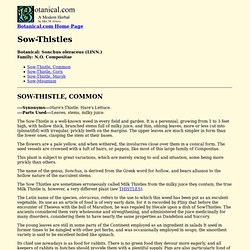
Family: N.O. Plantain, Common. Botanical.com Home Page Botanical: Plantago major (LINN.)
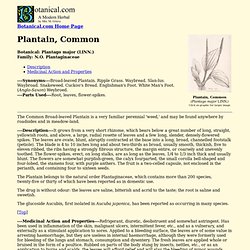
Family: N.O. Herb Profile: Plantain for Wound Healing and Inflammation. Velvet Leaf: Fiber and Food. Velvet Leaf is a commercial failure but a successful foreign invader. A flop as a fiber plant and cursed for its infiltration of food crops, it was first cultivated in China some 3,000 years ago. From there Abutilon theophrasti made its way nearly everywhere on earth: The Mediterranean, Europe. It was introduced into North America before 1750 to make rope but never became popular for that. Instead it became an agricultural pest.